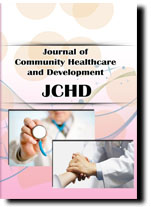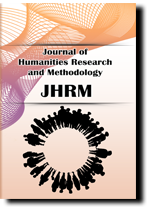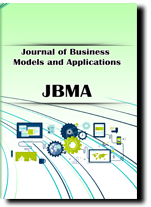Abstract:
The purpose of this study was to influence of perceived health status and falling efficacy on life satisfaction in elderly performing physical activity program. The 12-week physical activity program was applied to public health clinic in H City from January to March 2019, and the evaluation was conducted before and after the program was applied. The data collected from 34 subjects were analyzed by SPSS 23.0. The ratio of women was 94.1%, and the average age was 76.09(±7.37). The number of chronic diseases was the highest with 2 (41.2%) and the average was 2.29 (±1.24). Life satisfaction, perceived health status, and falling efficacy were 3.0 points in the pre-average and 3.3 points in the post-average, which were statistically significant. The factors that affect the life satisfaction before and after applying the physical activity program were perceived health status (p<0.001). The physical activity program for the elderly is an essential project for the welfare policy for the elderly, and continuous performance and expansion are required.
Keywords:
Falling Efficacy, Life Satisfaction, Perceived Health Status, Physical Activity/p>
References:
[1] S. D. Park, “Welfare theory for the elderly”, Seoul: Samwoosa, (2006).
[2] Korea national statistical office. 2017 Age statistics, (2017).
[3] WHO, World Health Statistics 2016: Monitoring health for the SDGs, (2016).
[4] G. R. Kim, Y. K. Lee, N. H. Hwang, J. Y. Seo, H. W. Bae, “Enhancing daily living convenience for elderly households through internalization of the aging-friendly industry method study”, Korea Institute for Health and Social Affairs, (2018).
[5] Y. C. Kim, J. A. Baek, “The effects of family conflict, social support and self-esteem on life satisfaction of the aged”, Journal of Digital Convergence, vol. 14, no. 7, (2016), pp. 279-287.
[6] H. Leventhal, E. Halm, C. Horowotz, E. A. Leventhal, and G. Ozakinci, “Living with chronic illness: A contextualized, self-regulation approach”, The sage handbook of health psychology, (2004), pp. 197-240.
[7] M. C. Buchmann, L. Kriesi, and S. Sacchi, “Labour market structures and women’s employment level, Work”, Journal of Employment and Society, vol. 24, no. 2, (2010), pp. 279-299.
[8] J. S. Jang, “Musculoskeletal disease of the elderly”, Clinical Guide for the Elderly Disease II, (2009).
[9] K. H. Byeon, and Y. H. Nam, “The relationship between status of chronic disease and fall experience in Korean elderly: Based on 2015 Community Health Survey”, The Journal of Korean Society for School & Community Health Education, vol. 20, no. 1, (2019), pp. 113-126, DOI: 10.35133/kssche.20190430.009.
[10] J. Cushnaghan, C. Mc Carth and P. Dieppe, “Taping the patella medially: a new treatment for osteoarthritis of the knee join?”, British Medical Journal, vol. 308, (1991), pp. 753-855.
[11] S. R. Cummings, D. M. Black, M. C. Nevitt, W. Browner, J. Cauley, K. Ensrud, H. K. Genant, L. Palermo, J. Scott, and T. M. Vogt, “Bone density at various sites for prediction of hip fractures”. The Study of Osteoporotic Fractures Research Group. Lancet, vol. 341, no. 8837, (1993), pp. 72-75.
[12] E. Diener, “Assessing subjective well-being: Progress and opportunities”, Social indicators research, vol. 31, no. 2, (1994), pp. 103-157.
[13] M. H. Cho, and G. H. Cha, “A comparative study on quality of life among countries”, Seoul: Jipmoondang, (1998).
[14] Diener, Emmons, Larsen, and Griffin, “The satisfaction with life scale”, Journal of Personality Assessment, vol. 49, (1985), pp. 71-75.
[15] M. M. Farmer and K. F. Ferraro, “Distress and perceived health: mechanisms of health decline”, Journal of Health and Social Behavior, vol. 38, no. 3, (1997), pp. 298-311.
[16] D. L. Speake, M. E. Cowart and K. Pellet, “Health perceptions and lifestyle of elderly”, Research in Nursing and Health, vol. 12, no. 2, (1989), pp. 93-100.
[17] M. E. Tinetti, D. Richman and L. Powell, “Fall efficacy as a measure of fear of falling”, Journal of Gerontology: Psychological Science, vol. 45, no. 6, (1990), pp. 239-243.
[18] L. Yardley, N. Beyer, K. Hauer, G. Kempen, C. Piot-Ziegler and C. Todd, “Development and initial validation of the falls efficacy scale-international (FES-I)”, Age and Ageing, vol. 34, no. 6, (2005), pp. 614-619.
[19] J. H. Heo, S. G. Lim and D. H. Lee, “Development of the Korean falls efficacy scale (FES-K) for the elderly”, The Journal of Physical Education, vol. 49, no. 3, (2010), pp. 193-201.
Citations:
APA:
Nam, Y. H., (2020). The Effects of Physical Activity Programs on Life Satisfaction of the Elderly. Journal of Nursing Methodology (JNM), ISSN: 2652-6913, NADIA, 1(1), 25-30. doi: 10.33832/jnm.2020.1.1.04.
MLA:
Nam, Young Hee, “The Effects of Physical Activity Programs on Life Satisfaction of the Elderly.” Journal of Nursing Methodology, ISSN: 2652-6913, NADIA, vol. 1, no. 1, 2020, pp. 25-30. JNM, http://article.nadiapub.com/JHRM/vol1_no1/4.html.
IEEE:
[1] Y. H. Nam, "The Effects of Physical Activity Programs on Life Satisfaction of the Elderly." Journal of Nursing Methodology (JNM), ISSN: 2652-6913, NADIA, vol. 1, no. 1, pp. 25-30, Jun 2020.




